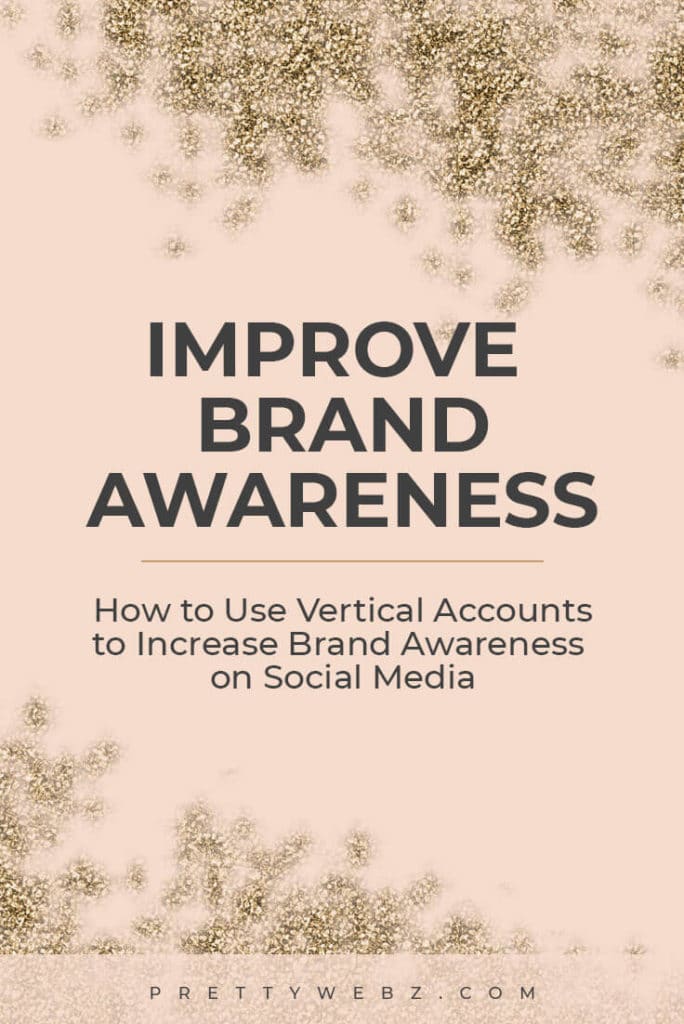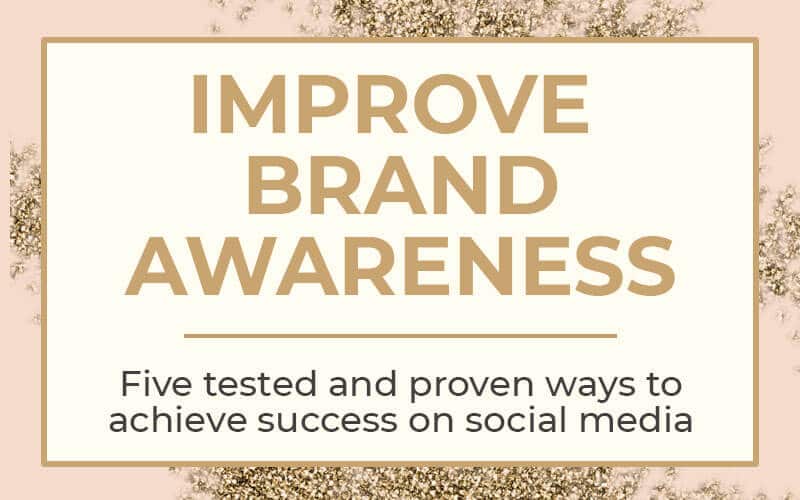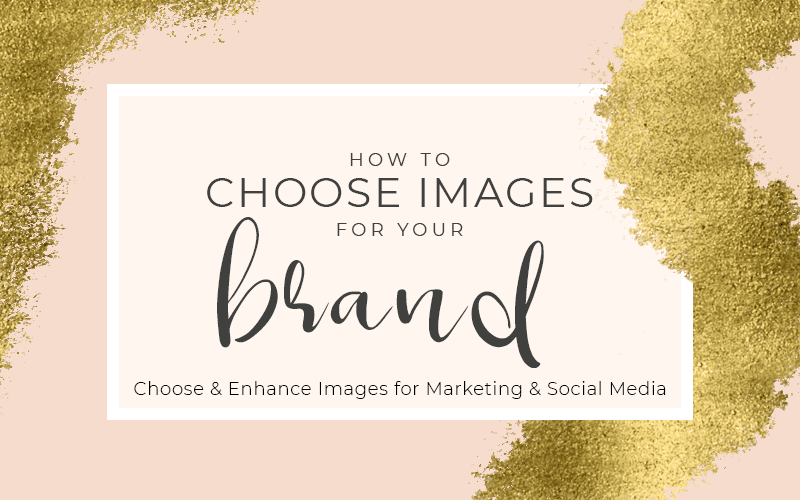5 Secrets to Improve Brand Awareness on Social Media
We all know that social media is completely saturated. Still, social media is a great way to have one on one conversations and get to know other people in your niche and talk to your potential customers.
If you’ve been working at building your social media presence for a while then you know that social media is not about having a presence it’s about being present. There are certain things that you should do in order to break through beyond just setting up an Instagram profile or setting up a Facebook page.
In this post, I want to give you a few ideas for creating engagement on social media without feeling overwhelmed by what to post and when you should post it. I also want to share a strategy for getting laser-focused on your target market and grabbing their attention at an emotional level.
1. Being Everywhere will get you Nowhere
We get overwhelmed by social media when we try to be all things to all people. Set up all of your social media accounts, but focus on one or two platforms at a time. It’s difficult to be present everywhere. The first thing you must do is choose where you want to make your first dent in the online world. Start small, one or two platforms. Get to know these platforms and how people use them very well.
Pick Your Poison
The platforms you choose to focus your social media efforts should be about your potential customers. Where are they? What social media platform do they most enjoy using?
Twitter for Fast News & Current Events
Twitter is about fast-paced conversations and to the minute news. The posts on Twitter are also here and gone in a matter of minutes.
Facebook for Community
The Facebook feed is all about funny videos, meme’s and catching up on what your friends are doing. If you want to catch them in this mindset then market to them on Facebook.
Facebook is not the ideal place for business unless you’re talking to people in a Facebook group about business. The best places to connect with potential customers on Facebook is in special interest groups. These groups are not about promotion, they are about community.
Make sure to make helping each other, connecting, collaborations and making friends with similar interest a priority. If you do this you won’t have to shamelessly promote. The bottom line is you do not make this kind of interaction about selling.
Pinterest for Pageviews
Pinterest is not social, this is more of a collection of ideas and data. One person may collect decorating ideas and another will collect blogging tips. Most people have many collections and they use them to buy products, services, and courses. If you sell low-cost products or your biggest focus is on page views to your website, Pinterest has it hands down.
If you’re new to online business, you might think that pageviews are exactly what you want but Pageviews aren’t the goal for everyone. With Pinterest, focus on what you want to do with that traffic once you get it. How are you going to keep them coming back? Using Pinterest for opt-in landing pages and sales pages is a great tactic for capturing Pinterest traffic.
Instagram for Showcasing
Instagram is perfect for visual brands like artists, food, health, and inspiration. You can only post so many photos of your product though. Instagram gives you an opportunity to showcase your products in real-life situations. It also gives you a great platform for showcasing your brand personality. Instagram is also a younger audience in general so if your goal market is the under thirty crowd and your brand is highly visual, consider Instagram.
More Posts on this Topic
2. Take Advantage of Social Media Communication Features
Twitter, Facebook, Instagram, and others all feature amazing tools for communicating one on one or one to many. These tools are nice to have in your arsenal. Facebook Live, Twitter chats and all the rest are powerful tools for talking to a group of people, for masterminds, meetings, teaching, and support.
Use these tools to your advantage. Make life so much easier by being where your customers already hang out.
3. Follow The Three C’s
Follow the Universal Rules of Social Media Marketing. There are three rules to achieving success on social media that apply to any brand. These are the big three.
Content
When creating social media content pay attention to what your audience responds to and loves. Your social media content should be 80% what is popular with your audience and 20% product and promotions. Don’t oversell, even an established brand with a dedicated audience gives more than they receive. Read the book Jab, Jab, Right Hook for a deep dive on how to optimize your social media content.
Collaboration
If your marketing on social media you should be collaborating with Pages, complimentary brands and influencers. Build relationships with brands that have similar size audiences for shout outs and engagement such as likes comments and shares. The more people talk about your brand the more trust and credibility it will have.
Consistency
It’s important to stay consistent with your content. I know that you know this. It’s easy to skip a week but you could lose those few people you have attracted to you when you’re flaky. Staying consistent creates a memorable front of mind association. Bonus, it’s also good for SEO.
4. Have A Plan For Your Social Media Content
In this section, my goal is to help you make a simple plan for your social media content. You can skip this and wing it, post whatever inspires you at the moment. I’m warning you, that would be a terrible idea. This post as you go strategy is highly ineffective because it’s not consistent.
You will find yourself struggling to come up with ideas for content. With the “no plan” strategy, you also run the risk of posting things that do not reflect your brand personality and values. If you do that, you will lose trust. The whole point of posting and engaging on social media is to build trust. Don’t undermine yourself.
Here are the basic things you need to have down to keep your social media accounts on track and on-brand.
Content Territories
Contents territories are just categories of topics that you speak to on your social media profiles. These are things that are related to your products and to your brand and things that your brand cares about the most. Build content territories around the words that describe your brand values and personality.
If you value encouraging women entreprenures then you would speak to feminism, the glass ceiling, and inspiration for women, business tips for women, etc. in your social media posts. Not every post will be about this specific topic but it will be one of your content territories.
Likewise, if you value animal rights you would plan content around that. The important thing here is that the content relates to your brand. A clothing company, for example, could take a stand on either of these issues or both if they use vegan materials for their clothing and they make clothes for businesswomen. Content territories help you speak to the people that believe what you believe.
Figure out what you want to say to your audience, the message that you want to get across to them with your social media posts. You should have a sense for this based on your brand values, personality, and the products you offer.
You worked hard figuring out how you will position yourself in the market by creating a customer avatar, defining a unique selling proposition and all the other thought work you put into defining your brand. It’s time to use this information to decide on your content territories.
To learn more about content territories and to help you decide what those content territories should be for your social media accounts you can read this strategic article on creating a detailed and specific content plan.
Content Categories
At a finer level, focus on these content categories, or something similar, for your brand account. You can use the same categories for your super niche and non-branded accounts, more on that later.
- Entertainment
- Inspiration
- Education
- Conversation
- Connection
- Promotion
If you’re not familiar with content categories, here is a great article on how to use these content categories for your social media accounts from Louise Myers blog.
5. Build an Internal Brand Network on Social Media
What I’m talking about next is the same concept of content territories and content categories at a higher level. Be warned, this next section is not for a casual blog. Leveling up your social media management will take a lot of effort. Depending on your product, service, and goals, it may or may not be worth the time and effort. Still, I’m going to mention it because I don’t see many people talking about this even though it’s done all the time.
I feel like the idea of using multiple accounts to support your brand has a negative connotation. Because so many people have used multiple accounts to “game” their stats on any given platform. That is not the idea behind this strategy so please have an open mind and look at it from the point of view of your potential customers. Would you rather follow an account that speaks directly to you or a generic brand account that is covering all the bases?
Using Non-Branded Vertical Accounts to Build Brand Awareness on Social Media
We all have values, things we care about and things we can’t help but talk about on social media. Most of us have several values. Just like you can’t be as effective on several platforms you also need to be very specific on your niche topics in order to reach those die-hard representatives of a cause or value.
For a new brand trying to break through to people who value different causes, it’s difficult to cover it all on your brand account. To get laser-focused on all of your super niche markets consider creating non-branded vertical accounts separate from your brand.
I’m going to use reusable straws as my product just to give you an example. If you sell reusable straws, you focus on the environmentalists, animal lovers, minimalists, etc. Your brand account can speak to all of these super-niche areas but the message will be diluted.
A vertical account is aligned with your brand but it speaks to one thing and one thing only, i.e. the environmentalists, minimalists, animal lovers, etc. Creating specific accounts that speak to only one of these will have more impact.
Okay, this one takes a lot of work, if you have a social media manager or you have more time than money this is a great way to get to know a potential customer at a much deeper level. You have to speak their language.
This strategy taps into what your customers stand for, the things they are emotionally connected with. When a person is emotionally vested in a cause or a topic they can’t help but talk about it. In your case, they can’t help but share your content.
Other Posts You Might Like
Using Vertical Accounts to Promote Your Products
People don’t want to be sold to, therefore you have to find new ways into their world. I know this sounds sneaky but people have trust issues with corporate accounts. This is especially true for new brands that post content that is focused on selling.
Hard selling will definitely turn off your audience and make them resist your products. Instead, broach the topic from another viewpoint. This is not the same as building a brand page. People don’t talk to brands until they trust you, they do talk to and trust people much more quickly.
Use your unbranded accounts that focus on one of your brand’s values to reach and speak to your potential clients. Do not use these accounts to sell your products, use the social accounts to raise awareness of the problem your brand is focused on solving. Every now and then, when it’s appropriate you can talk about your products. This is a long game strategy and it requires a big investment of your time or money if you hire someone to do this for you.
You must be committed to the causes you have staked a claim on. This strategy is not about gaming the system for likes, shares, and comments. This strategy is about reaching and talking to a very specific person, a raving fan of a specific cause.
What you get in return is the ability to bring awareness about your causes, speak to people that care deeply about the cause and ultimately influence them to share your brand to others like them.
Guidelines for Successful Vertical Accounts
Be real, this is the most important part of creating vertical account network. A brand network like this is not about buying likes followers or automation. This is about getting to know the people in this specific niche and what they desire most.
Focus on consistency and community. Post regularly on your chosen platform. At least once a day, make sure to interact with your followers and follow similar accounts.
Be engaged with your community and followers. Respond to comments, make a list of accounts in your niche and reach out to them, tag and mention them in your post and share their post.
Stay predictable and work off the schedule. Create content pillars or areas of interest for your niche and decide what days of the week those items will be published.
Weight your content mix evenly until you know what gets the most engagement and weigh your post categories accordingly.
Mix up your media news stories, photos, and video to provide your audience with different exposure to you.
Track your stats, and let analytics guide your strategy. Change the content mix to favor those posts that get the most engagement and are the most popular. This is it where you begin to understand what your audience relates to the most. When you find the sweet spot, engagement will increase and so will trust.
What Next?
If you like the informational topics that we share here on Prettywebz, then make sure to subscribe to our newsletter to receive notifications when we send out new videos or blog posts. You can sign up in the footer of any page on the website. Plus, get exclusive design resources you can’t get anywhere else!
Also join me on Youtube as well to check out the playlists I’ve set up for Photoshop, PowerPoint and other software you can use to design your online graphics.
Did you like this post? Share it with a friend or save it for later by pinning this image!








